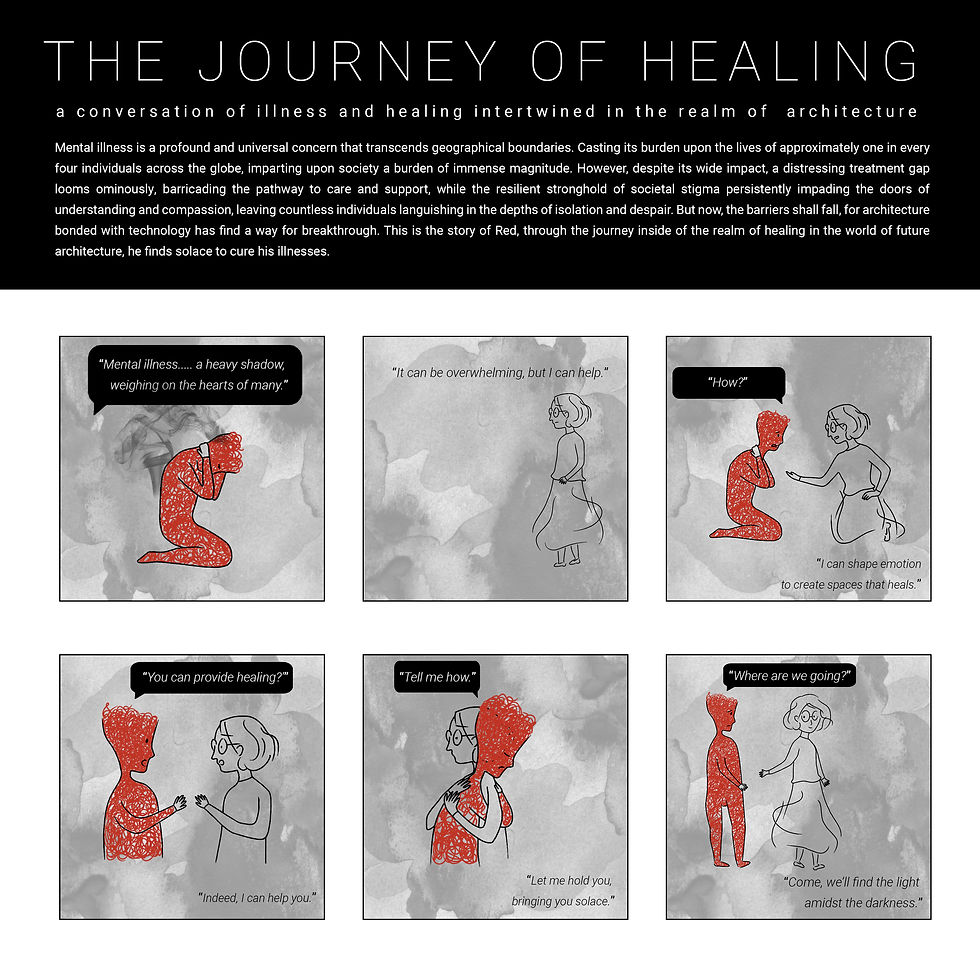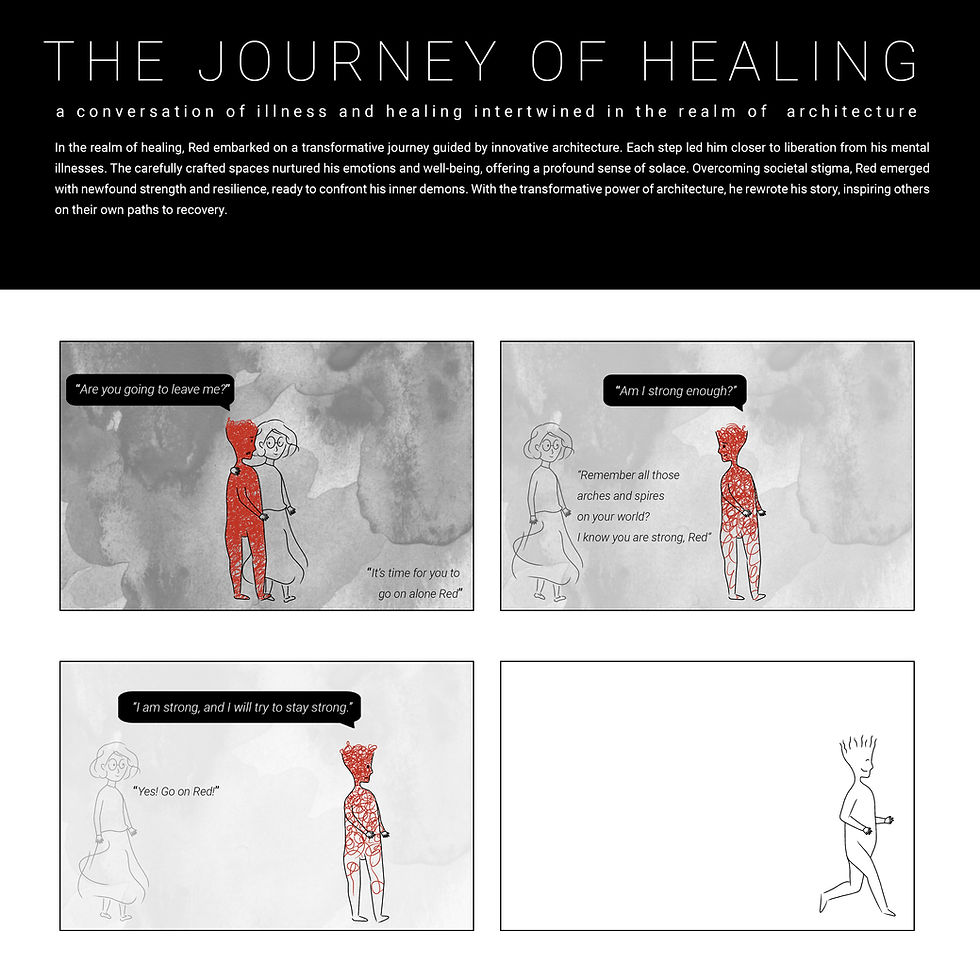The Journey of Healing
Christeven Cohen & Lawrence Nobel
Indonesia


© Christeven Cohen & Lawrence Nobel

© Christeven Cohen & Lawrence Nobel

© Christeven Cohen & Lawrence Nobel

© Christeven Cohen & Lawrence Nobel
Mental disease is a serious and global problem that crosses all borders. It weighs heavily on the lives of nearly one out of every four people worldwide, imposing a massive strain on society. Despite its widespread impact, a troubling treatment gap looms over the path to care and support, while the resilient stronghold of societal stigma persistently impads the doors of understanding and compassion, leaving countless individuals in the depths of isolation and despair.
This is when architecture comes into play. When some people think adversely, spaces could aid positively. Since architecture may change emotion, emotion can elicit human senses. A healing environment can be created using these senses. However, not all mental illnesses are the same for everyone. The prescription of medicine may be the same, but its place of healing will vary from person to person because each illness has its own tale and history. That is why a single design that heals for one person might be a disaster for another.
In the journey of healing through architecture, the significance of a supportive travel companion (community) cannot be overlooked. Just as architecture influences physical locations, it may also foster a sense of belonging and connection among people in recovery. The healing process is accelerated by the force of a comrade paired with transformational architecture, reminding individuals that they are not alone on their path.
Another thing to remember is that healing is a journey, not a single act. To be cured, one must struggle through ups and downs. Not as simple as rotating one's palm. With that stated, if one changes day by day to become a stronger person. This transformation must additionally incorporate inside the healing space. Rather than being a static one-size-fits-all framework, the architecture becomes a dynamic shape that varies during a person's trip, adjusting to their demands and stories.
Responsive architecture might be shown as a symbolic element. Stairs are difficult for many individuals because going up against gravity implies striving and combating the downforce. The terrain, which can range from basic to complicated, represents the complexities of mental illness. The pool represents emotion because it provides a calm and release, neutralizing the fire of emotion. Arches that are robust and firm will become a symbol of perseverance. Just as coping with mental problems may be difficult. Last but not least, despite their illness, they have optimism deep inside their hearts. Like a tower, it rises into the sky as a symbol of unshakable optimism.
With all of these as the foundation of healing inside the journey, a specific healing place that focuses on the specific problem of one individual may be generated. And this architecture will not be static; it will change as the person grows stronger. Each day and each step will lead them to liberation from mental illnesses. The carefully crafted spaces nurtured emotions and well-being, offering a profound sense of solace. Overcoming societal stigma, they will emerge with newfound strength and resilience, ready to confront their inner mountains. With the transformative power of architecture, they can rewrite their story, inspiring others on their own paths to recovery.




